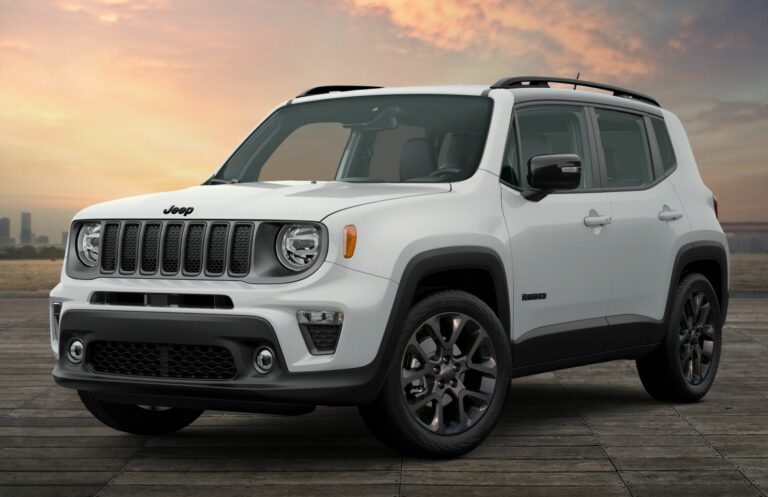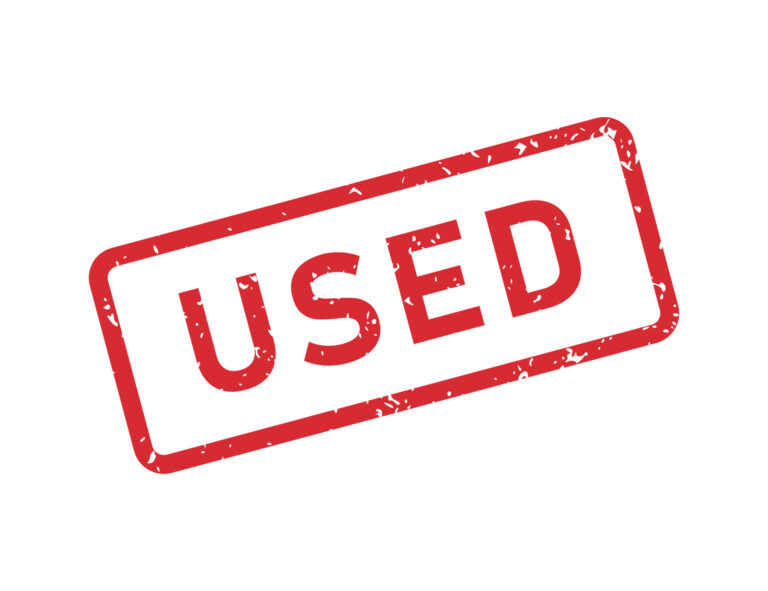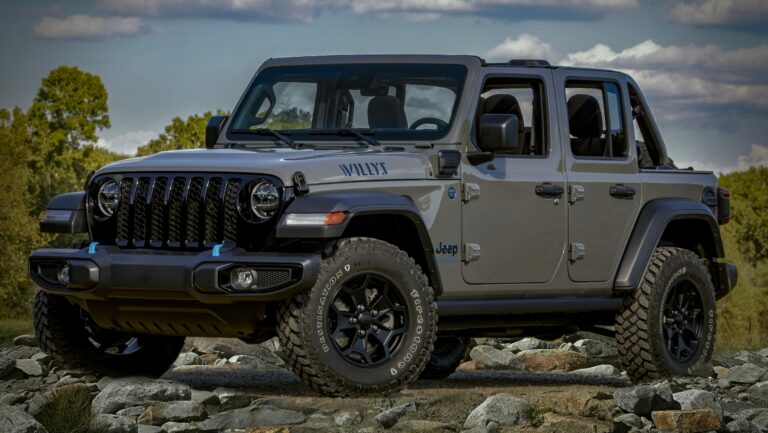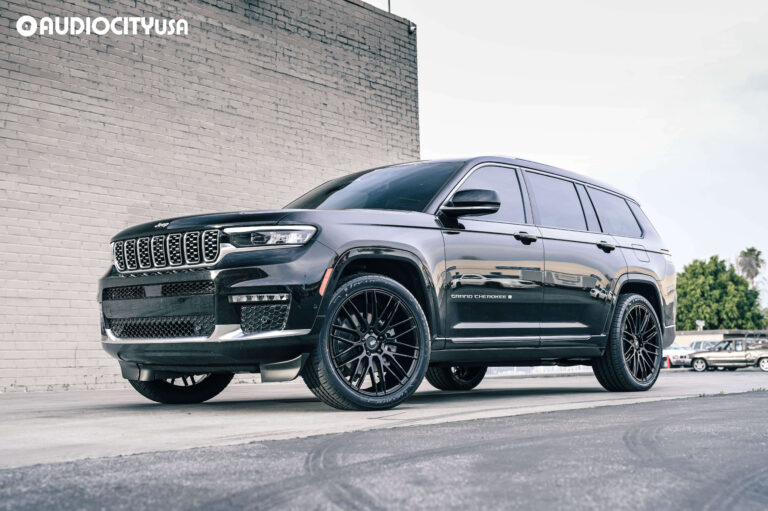Stock Jeep Wheels And Tires For Sale: Your Comprehensive Guide to Smart Upgrades and Replacements
Stock Jeep Wheels And Tires For Sale: Your Comprehensive Guide to Smart Upgrades and Replacements jeeps.truckstrend.com
The allure of a Jeep is undeniable – its rugged capability, iconic design, and the promise of adventure. For many Jeep owners, customization is part of the journey, often starting with the wheels and tires. This leads to a vibrant secondary market for "stock Jeep wheels and tires," the original equipment manufacturer (OEM) sets that come standard on a Jeep straight from the factory. Whether you’re looking to save money, restore your Jeep to its original glory, or simply need a reliable spare, understanding the market for used stock wheels and tires is crucial. This comprehensive guide will navigate you through everything you need to know, from where to find them to what to inspect, ensuring you make an informed and beneficial purchase.
Understanding the Appeal of Stock Jeep Wheels and Tires
Stock Jeep Wheels And Tires For Sale: Your Comprehensive Guide to Smart Upgrades and Replacements
Stock Jeep wheels and tires are precisely what they sound like: the wheel and tire combinations that Jeep installs on its vehicles before they roll off the assembly line. While many enthusiasts quickly upgrade to larger, more aggressive aftermarket setups, this creates a unique opportunity for others.
Why are stock Jeep wheels and tires often for sale?
- Upgrades: The most common reason. Owners frequently replace their stock wheels and tires with lift kits and larger, more aggressive aftermarket options for enhanced off-road performance or a custom look.
- Replacements: For owners who need to replace a damaged wheel or worn-out tire, finding a used stock set can be significantly more affordable than buying new.
- Spares: A full-size matching spare is invaluable, especially for off-roading. Buying a used stock wheel and tire can serve this purpose perfectly.
- Restoration: For those restoring an older Jeep or aiming for an OEM look, finding original stock components is essential.
- Financial Savings: Acquiring a lightly used set of stock wheels and tires can save hundreds, if not thousands, of dollars compared to buying new.

Benefits of Buying Stock Jeep Wheels and Tires:
- Cost-Effectiveness: This is arguably the biggest draw. Used stock sets are a fraction of the cost of new OEM or aftermarket equivalents.
- Proven Performance & Reliability: These sets were designed by Jeep engineers to perfectly match the vehicle’s suspension, weight, and performance characteristics. They offer predictable ride quality, handling, and safety.
- Direct Fit & Ease of Installation: Being OEM, they are a guaranteed direct fit for the specified Jeep model, eliminating compatibility guesswork and simplifying installation.
- Maintain Ride Quality: If you value the factory ride and handling characteristics, sticking with stock sizes and weights is the best way to maintain them.
- Good for Daily Driving: Stock tires are often optimized for highway comfort, fuel efficiency, and wet weather performance, making them ideal for daily commuters.
- Resale Value: Maintaining a stock set can be beneficial if you plan to sell your Jeep later, as some buyers prefer the original setup.


While stock wheels and tires may not offer the extreme off-road prowess or custom aesthetics of aftermarket options, their practicality, reliability, and affordability make them an excellent choice for a wide range of Jeep owners.
Where to Find Stock Jeep Wheels and Tires for Sale
The market for used stock Jeep wheels and tires is robust and diverse. Knowing where to look can significantly increase your chances of finding the perfect set.
- Online Marketplaces:
- Facebook Marketplace: A goldmine for local listings. Use specific search terms like "Jeep JK Rubicon wheels," "JL Sport wheels," or "Gladiator stock tires."
- Craigslist: Another popular platform for local classifieds. Similar search strategies apply.
- eBay: Excellent for a wider geographical search, but shipping costs for wheels and tires can be substantial. Look for local pickup options.
- Dedicated Jeep Forums & Groups: Websites like JL Wrangler Forums, JK-Forum, and various Facebook groups dedicated to specific Jeep models (e.g., "Jeep Wrangler JL Owners," "Jeep TJ & LJ Classifieds") often have classified sections where members sell their take-offs. These communities can also offer valuable advice.
- Local Sources:
- Tire Shops & Off-Road Shops: Many shops that perform lift kits and tire upgrades will take stock wheels and tires as trade-ins or simply have them left behind. Call around and ask if they have any "take-offs" for sale.
- Jeep Dealerships: Sometimes, dealerships might have stock sets from customers who immediately upgraded their new Jeeps. It’s less common, but worth an inquiry.
- Salvage Yards/Auto Recyclers: For older models or individual wheels/tires, a reputable salvage yard might have what you need.
- Word-of-Mouth: Let your fellow Jeep-owning friends know you’re looking. Someone in their network might be upgrading soon.
Tips for Searching:
- Be specific with your search terms (e.g., "Jeep Wrangler JK 17 inch wheels," "Jeep Gladiator Rubicon tires").
- Set up alerts on online platforms for new listings.
- Be prepared to travel a bit for a good deal, especially for full sets.
What to Look For When Buying Stock Jeep Wheels and Tires
Purchasing used items requires careful inspection to ensure you’re getting value for your money and not inheriting someone else’s problems.
1. Condition of the Tires:
- Tread Depth: Use a penny or a tread depth gauge. Insert Lincoln’s head upside down into the deepest groove. If you can see the top of his head, the tread is likely 2/32" or less and worn out. For good life, look for 6/32" or more. New tires typically start at 10-12/32".
- Even Wear: Inspect the entire tread surface. Uneven wear (e.g., worn on one side, cupping) can indicate alignment issues on the previous vehicle, but more importantly, it means the tire’s lifespan is reduced.
- Sidewall Cracks/Damage: Look for dry rot, cuts, bulges, or punctures. These are signs of age, poor storage, or damage that can lead to tire failure.
- Age (DOT Code): Every tire has a DOT code on its sidewall. The last four digits indicate the week and year of manufacture (e.g., "1520" means 15th week of 2020). Tires older than 6 years, even with good tread, can start to degrade internally and become unsafe.
- Plugs/Patches: Ask if the tires have ever been repaired. A professional patch in the tread area is generally fine, but multiple repairs or sidewall repairs are red flags.
2. Condition of the Wheels:
- Bends and Cracks: The most critical check. Roll the wheel on a flat surface or spin it slowly while mounted to look for wobbles or deformities. Cracks, especially near the lug holes or spokes, make the wheel unsafe.
- Curb Rash & Scratches: Minor cosmetic damage is common and usually acceptable, especially for off-road use. Assess if the damage is superficial or indicative of a harder impact.
- Corrosion/Peeling Finish: Especially for older wheels or those in harsh climates, inspect for corrosion, particularly around the lug holes and valve stem.
- Lug Nut Holes: Ensure they are not stripped, elongated, or damaged, which could lead to improper seating or wheel separation.
- TPMS Sensors: Ask if the Tire Pressure Monitoring System (TPMS) sensors are included. If they are, confirm they are compatible with your Jeep’s model year. If not, budget for new sensors and installation.
3. Compatibility with Your Jeep:
- Bolt Pattern: This is non-negotiable.
- Jeep Wrangler JK (2007-2018) & JL (2018-Present), Gladiator (2020-Present): 5×5" (5x127mm)
- Jeep Wrangler TJ (1997-2006) & YJ (1987-1995): 5×4.5" (5×114.3mm)
- Older models (CJ, etc.) and other Jeep models (Grand Cherokee, Cherokee, Renegade, Compass) have various patterns, so always double-check your specific vehicle’s requirements.
- Wheel Diameter & Width: Ensure the wheel diameter (e.g., 17", 18") and width are appropriate for the tires you plan to use (if buying separately) or for your vehicle’s clearances.
- Tire Size: Confirm the tire size (e.g., 245/75R17, 285/70R17) is suitable for your Jeep.
- Backspacing/Offset: While stock wheels are designed to fit, if you’re mixing components, be aware of how backspacing affects fitment.
4. Price & Negotiation:
- Research current market values for similar sets. Compare prices to new tires/wheels and aftermarket options.
- Be prepared to negotiate, especially if there are minor imperfections.
- Consider the total cost, including potential TPMS sensors, mounting, balancing, and installation.
Types of Stock Jeep Wheels and Tires by Model and Trim
Jeep offers a variety of stock wheel and tire combinations across its models and trim levels, each designed for specific purposes.
- Jeep Wrangler (JL/JK/TJ/YJ):
- Sport/Sahara: Typically come with All-Terrain (AT) or Highway-Terrain (HT) tires. These are designed for a balance of on-road comfort, fuel efficiency, and light off-road capability. Wheel sizes often range from 17" to 18", with less aggressive tread patterns. Examples include Bridgestone Dueler A/T or Michelin LTX A/T.
- Rubicon: The off-road specialist. Rubicon models are equipped with more aggressive Mud-Terrain (MT) tires, often larger in diameter (e.g., 33-inch BFGoodrich K02 A/T or Falken Wildpeak M/T on JL Rubicons). Wheels are typically 17-inch, sometimes beadlock-capable on newer JL models, providing enhanced off-road grip and durability.
- Jeep Gladiator (JT): Similar to the JL Wrangler, with Sport, Overland, and Rubicon trims offering corresponding wheel and tire packages. The Rubicon Gladiator also features aggressive MT tires and robust wheels.
- Jeep Grand Cherokee (WK2/WL): Stock wheels and tires are generally more street-oriented, focusing on comfort, quietness, and all-season performance. Sizes vary widely, with larger diameters and less aggressive tread.
- Jeep Cherokee (KL), Compass (MP), Renegade (BU): These compact and subcompact Jeeps come with smaller, more car-like wheels and tires optimized for urban driving, fuel efficiency, and light trail use. Trailhawk trims for these models often feature slightly more aggressive AT tires and unique wheel designs.
Understanding the specific trim level and model year of the stock wheels and tires you’re considering is crucial for assessing their intended use and compatibility with your Jeep.
Installation and Maintenance Tips
Once you’ve found your ideal set of stock Jeep wheels and tires, proper installation and ongoing maintenance are key to maximizing their lifespan and performance.
- Professional Installation Recommended: While some DIY enthusiasts might tackle it, professional mounting and balancing are highly recommended. This ensures proper fitment, even weight distribution, and correct functioning of TPMS sensors.
- Torque Specifications: Always ensure lug nuts are torqued to the manufacturer’s specified values. Over or under-torquing can lead to issues.
- TPMS System: If your Jeep has a TPMS, ensure the sensors are correctly installed and programmed. Sometimes, a "relearn" procedure is needed for your Jeep to recognize new sensors.
- Regular Rotations: Rotate your tires every 5,000-7,500 miles to promote even wear and extend tire life.
- Proper Inflation: Maintain the recommended tire pressure (found on a sticker inside your driver’s side door jamb) for optimal performance, safety, and fuel efficiency.
- Cleaning and Inspection: Regularly clean your wheels to prevent corrosion and inspect both wheels and tires for any signs of damage, cuts, or bulges.
- Storage: If you’re buying a set for future use or as spares, store them properly in a cool, dry place away from direct sunlight. Stacking them flat or placing them on stands can prevent flat spots.
Estimated Price Table for Stock Jeep Wheels and Tires (Used)
Please note that these prices are estimates only and can vary significantly based on:
- Condition: Tread depth, wheel damage, age of tires.
- Location: Demand and supply in your local market.
- Seller: Private seller vs. shop.
- Inclusions: TPMS sensors, lug nuts.
| Jeep Model/Trim (Example) | Wheel Size | Tire Size (Approx.) | Tire Type | Estimated Used Price Range (Wheels Only) | Estimated Used Price Range (Tires Only) | Estimated Used Price Range (Full Set w/ Tires) |
|---|---|---|---|---|---|---|
| Wrangler JL Sport/Sahara | 17-18" | 245/75R17, 255/70R18 | HT/AT | $300 – $600 (Set of 4) | $200 – $500 (Set of 4) | $500 – $1000 (Set of 5 with TPMS) |
| Wrangler JL Rubicon | 17" | 285/70R17 (33") | MT | $600 – $1200 (Set of 4) | $400 – $900 (Set of 4) | $1000 – $2000 (Set of 5 with TPMS) |
| Gladiator JT Sport/Overland | 17-18" | 245/75R17, 255/70R18 | HT/AT | $300 – $600 (Set of 4) | $200 – $500 (Set of 4) | $500 – $1000 (Set of 5 with TPMS) |
| Gladiator JT Rubicon | 17" | 285/70R17 (33") | MT | $600 – $1200 (Set of 4) | $400 – $900 (Set of 4) | $1000 – $2000 (Set of 5 with TPMS) |
| Wrangler JK Sport/Sahara | 16-18" | 225/75R16, 255/75R17 | HT/AT | $200 – $500 (Set of 4) | $150 – $400 (Set of 4) | $350 – $800 (Set of 5) |
| Wrangler JK Rubicon | 17" | 255/75R17 (32") | MT | $400 – $800 (Set of 4) | $300 – $700 (Set of 4) | $700 – $1500 (Set of 5) |
| Grand Cherokee (Newer) | 18-20" | Varies | AT/HT | $400 – $900 (Set of 4) | $300 – $600 (Set of 4) | $700 – $1500 (Set of 4) |
Note: Prices assume reasonable condition with usable tread life. "Set of 5" typically includes a matching spare.
Frequently Asked Questions (FAQ) About Stock Jeep Wheels and Tires
Q1: Are stock Jeep wheels and tires good for off-roading?
A1: It depends on the specific stock set. Rubicon models (Wrangler, Gladiator) come with capable mud-terrain tires that perform well off-road. Sport or Sahara trims typically have all-terrain or highway-terrain tires, which are suitable for light trails and gravel roads but may struggle in aggressive off-road conditions like deep mud or rocky terrain.
Q2: Can I put stock wheels from a Jeep JK on a JL?
A2: No. The Jeep Wrangler JK (2007-2018) uses a 5×5" (5x127mm) bolt pattern, but the Jeep Wrangler JL (2018-Present) also uses a 5×5" (5x127mm) bolt pattern. While the bolt pattern is the same, the offset and backspacing of the wheels are different. JL wheels are designed for wider axles and may cause rubbing or clearance issues if put on a JK without adapters, and vice-versa. Always verify specific fitment.
Q3: Do used stock sets come with TPMS sensors?
A3: Often, yes, but always confirm with the seller. If they do, ensure the sensors are compatible with your Jeep’s model year, as TPMS technology can vary. If not included, you’ll need to purchase and install new ones, which adds to the overall cost.
Q4: How much tread depth is considered "good" for used tires?
A4: New tires typically have 10-12/32" of tread. Legally, tires are considered worn out at 2/32". For a good value purchase, look for tires with at least 6/32" of tread depth remaining, which should provide a decent amount of usable life.
Q5: What is the DOT code on a tire, and why is it important?
A5: The DOT (Department of Transportation) code is a series of numbers and letters on the tire’s sidewall. The last four digits indicate the week and year the tire was manufactured (e.g., 3221 means 32nd week of 2021). Tires generally have a usable life of 6 years from their manufacture date, regardless of tread depth, due to rubber degradation. Avoid tires older than 6 years.
Q6: Should I buy used stock or new aftermarket wheels and tires?
A6:
- Used Stock: Pros: Significantly cheaper, proven OEM reliability, direct fit, maintains factory ride quality. Cons: Limited aesthetic options, may not offer desired extreme off-road performance, condition varies.
- New Aftermarket: Pros: Wide range of styles and performance levels, brand new condition, customized look/performance. Cons: Much more expensive, potential fitment issues (requiring lifts, spacers), may alter ride quality.
The choice depends on your budget, priorities (aesthetics, off-road performance, daily driving comfort), and willingness to compromise.
Q7: How do I know if a specific set of stock wheels and tires will fit my Jeep?
A7:
- Identify your Jeep’s model and year.
- Determine your Jeep’s bolt pattern. (e.g., 5×5" for JK/JL, 5×4.5" for TJ/YJ).
- Check the bolt pattern of the wheels you’re considering.
- Confirm the wheel diameter and tire size are within your Jeep’s stock specifications or within acceptable limits for any modifications you have (e.g., lift kit).
- Consider backspacing/offset. While stock wheels are usually fine, if mixing and matching, ensure they won’t cause rubbing. When in doubt, consult a reputable tire shop or Jeep forum.
Conclusion
Navigating the market for "Stock Jeep Wheels And Tires For Sale" can be a highly rewarding experience for Jeep owners. It offers a practical and cost-effective solution for replacing worn-out components, acquiring a reliable spare, or even giving your Jeep a factory-fresh look after previous modifications. By understanding the various sources, diligently inspecting the condition of both wheels and tires, verifying compatibility, and budgeting for potential additional costs like TPMS sensors and installation, you can make an informed decision that saves you money without compromising on quality or safety. A well-chosen set of stock wheels and tires can keep your Jeep rolling smoothly, reliably, and ready for whatever adventure lies ahead, proving that sometimes, the best upgrade is simply going back to basics.






